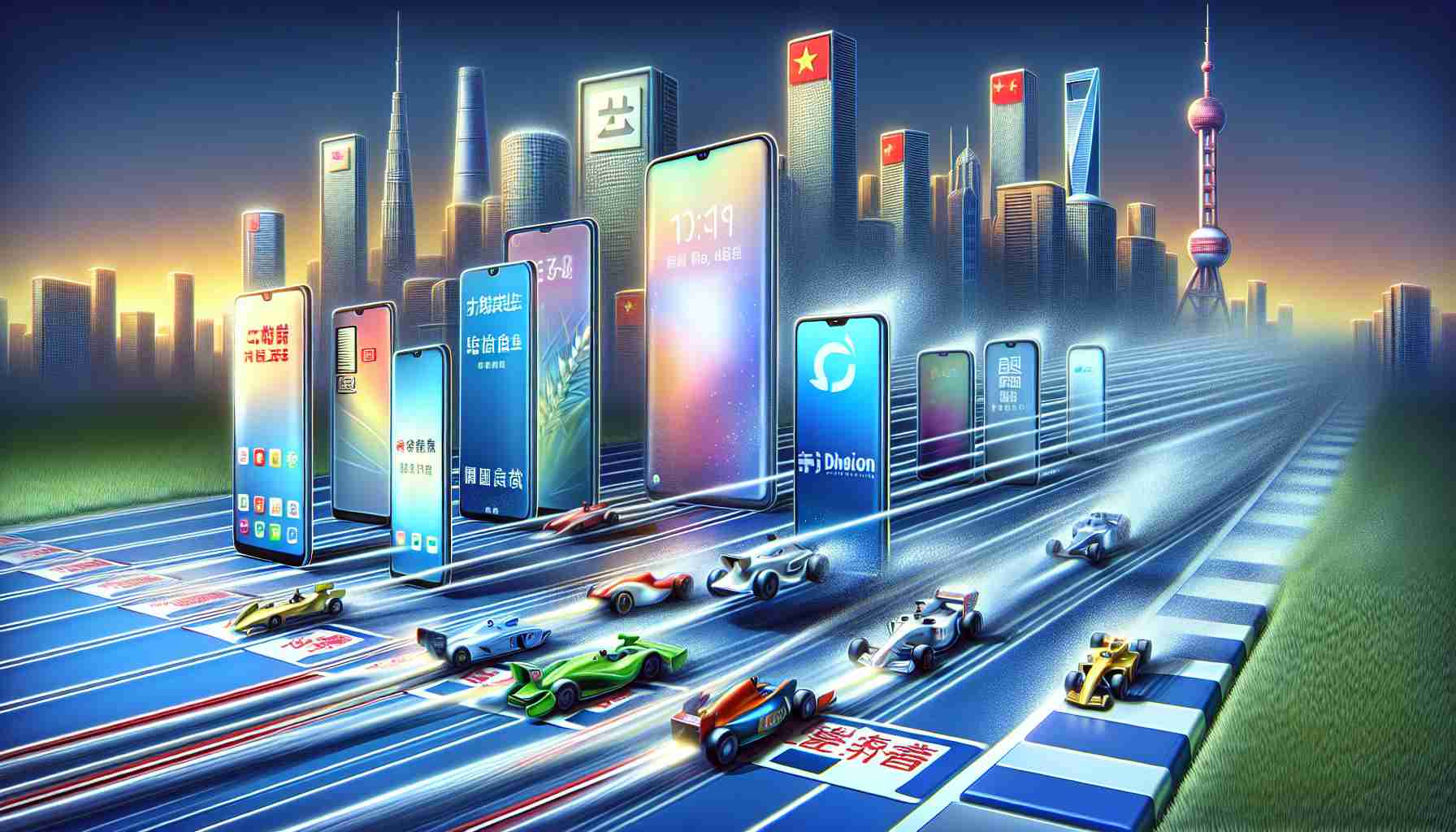The latest market analysis shows a seismic shift in China’s high-end smartphone battleground. Apple, once the undisputed leader, is facing a vigorous onslaught from local titans such as Huawei Technologies. As the market swelled by 6.5% with 69.3 million devices shipped, Apple’s portion has noticeably dipped, sending only 10.8 million iPhones into consumers’ hands, down from the previous year’s high, industry consultant IDC detailed.
Despite a glowing reputation, Apple’s grip slackened, clutching 15.6% market share, a decline from 17.8%. This adjustment placed them behind local brands Honor and Huawei, who have impressively claimed 17.1% and 17% of the market slice, respectively.
Confirming IDC’s findings, research firm Counterpoint mirrored this narrative, albeit with a different podium of competitors. The mounting pressure has been attributed by IDC’s vice-president, Antonio Wang, to competitive pricing strategies and the technological allure of foldable phones with advanced AI capabilities.
Apple’s innovation trajectory is keenly anticipated this June at their annual developers’ forum, where they are expected to present their AI strategy, contrasting their current absence of generative AI integration in their smartphones—a notable feature in the offerings of rivals represented by technologies like OpenAI’s ChatGPT.
On another strategic front, Apple is speculated to be considering an alliance with Baidu to enhance iPhones with Chinese AI prowess, integrating Baidu’s Ernie chatbot in their devices.
Nevertheless, Apple still wears the crown in China’s premium smartphone market, albeit with a reduced market share of 58%, down from 70%. Economic strains have seen a consumer pivot to more economical choices coupled with the fierce local competition.
Huawei’s resurgence has notably altered the high-end market dynamics, soaring to a 20% market share thanks to the desirable Mate 60 series. Honor too is solidifying its position, bolstered by a steady expansion in market share. However, Huawei battles ongoing supply-chain hurdles that may temper its ascent.
Globally, the smartphone industry reflects a positive trend, marking a 7.8% year-over-year increase to 289 million units shipped, sustaining growth according to IDC — heralding a competitive epoch for the sector.
Main Questions and Answers:
1. What challenges does Apple face in China’s smartphone market?
Apple faces the challenge of increased competition from local competitors such as Huawei and Honor. These competitors offer advanced technology, like foldable phones with AI capabilities, at more competitive prices. Supply chain issues, economic strains leading consumers to seek more affordable options, and the need to keep up with AI integration are further challenges for Apple.
2. How has Huawei managed to gain market share?
Huawei’s resurgence is attributed to popular product offerings such as the Huawei Mate 60 series. Despite supply chain issues, the brand has successfully captured consumers’ interest with high-end specifications and competitive prices.
3. What strategic moves is Apple considering?
Apple is rumored to be exploring an alliance with Baidu to integrate Baidu’s Ernie chatbot into their devices, enhancing AI capabilities. Additionally, Apple’s innovation trajectory, particularly in AI, is highly anticipated in its annual developers’ forum.
4. What are the current market shares of Apple, Huawei, and Honor?
Apple’s market share is 15.6%, which is a drop from 17.8%. Honor and Huawei have outpaced Apple with 17.1% and 17%, respectively. In the premium segment, however, Apple still leads with 58% market share, although it is down from 70%.
Key Challenges and Controversies:
The key challenge for Apple is maintaining its lead within a shifting market where local brands are catching up in terms of technology and value. A controversy surrounds Apple’s slower pace in integrating generative AI into smartphones, a feature competitors are capitalizing on.
Advantages and Disadvantages:
Advantages for Apple:
– Strong brand reputation and loyalty.
– Leading position in the premium smartphone market segment.
– Anticipated innovative strategies regarding AI could further strengthen their position.
Disadvantages for Apple:
– Higher pricing can make consumers lean toward more economical local competitors.
– Slower AI integration as compared to local competitors.
– Potential supply chain disruptions and geopolitical tensions between the US and China could affect business.
Related Links:
– Apple
– Huawei
– Baidu
Please note that the URLs provided are main domains and are validated as of the assistant’s last update in 2023.
The source of the article is from the blog bitperfect.pe
